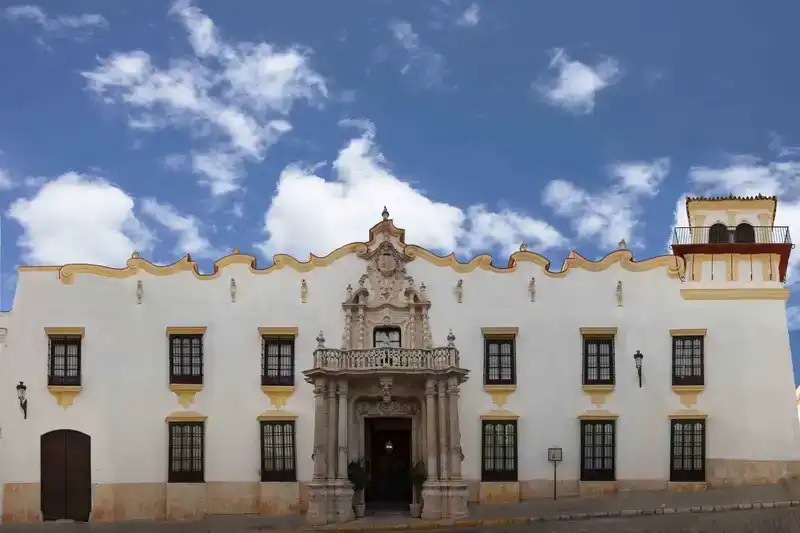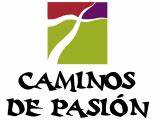


Osuna enters history through the writings of classical historians and geographers. Strabo, Pliny and Ptolemy all mention the Romanised Urso. Earlier, Appian and Diodorus recount the presence of troops from Italy who settled in this Turdetani territory to fight the Carthaginians or Viriato. However, human settlements in Osuna can be traced back many centuries earlier. There are traces of prehistoric cultures dating back more than a millennium before Christ. The best known were discovered by Engel and Paris in 1903. El Toro and the series of Osuna Reliefs tell of an ancient Iberian civilisation, which gave rise to an extraordinary culture where the best Mediterranean traditions from the East and Greece coexisted.
The arrival of Rome brought radical change in all areas. After the Battle of Munda, Urso became Pompey's last stronghold against Caesar's troops in the bloody Civil War that pitted the two sides against each other in their bid to gain hegemony over the Republic. Taken after a siege, it was converted into Colonia Genetiva Iulia by Caesar, receiving its own colonial law, fragments of which, the Bronces de Osuna, are exceptional legal documents from that period. The city, included in the Astigitano convent, became one of the most developed centres in Baetica. The remains of the forum, the theatre and the underground necropolis of Las Cuevas bear witness to its past splendour. Translated with DeepL.com (free version)
Little remains of the centuries of Visigothic rule. The crisis of the Late Empire gave way to barbarian dynasties that divided the vast territory formerly controlled by Rome into small kingdoms. An increasingly ruralised world is taking over from the old Latin urban civilisation.
The landscape changed abruptly with the arrival of the Muslims at the beginning of the 8th century. The new rulers did not initially alter the administrative and territorial organisation of Osuna, which had been in place since the time of Constantine. It was with the Caliphate, after the revolt of Ben Hafsun at the beginning of the 10th century, that Ûsuna acquired the status of cora, leaving behind its previous dependence on Écija. This was the town's heyday. From a fortified enclave, it took on the appearance of a city. However, the few remains preserved from the period of Islamic rule come from the final stage, under Almohad control. These are the remains of the town's defensive complex: the Torre del Agua (Water Tower) and the Paredones (Walls) of the old alcazaba (fortress). Their survival is due to two centuries of border wars.

Latin inscriptions on bronze
Subsequent urban development may help explain the scarcity of remains from that period. In 1240, Ferdinand III peacefully took over the town. Initially, this change of ruler did not alter the population. It was after the Mudejar revolt of 1264 that profound changes took place. The Muslim inhabitants were expelled and the fortress was placed in the hands of the Order of Calatrava, as an important enclave necessary for the defence of a sector of the border area known as the “Moorish Band”. After two centuries of harsh frontier life, during which the town was populated with great difficulty, another significant event took place in 1464. Osuna entered the orbit of the possessions that Pedro Girón managed to accumulate in Andalusia, becoming the capital of the feudal estate that he consolidated for his son, Alfonso Téllez Girón, 1st Count of Ureña. Osuna's destiny was linked to this family, and its unique appearance was largely the result of the actions of this aristocratic lineage. The Girones began by implementing an elaborate construction programme aimed at providing a symbolic apparatus that would reflect the image desired by the lords. In keeping with the characteristics of the period, Osuna became a centre of courtly life. At the beginning of the 16th century, they remodelled the old Almohad fortress into a palace. The medieval parish church of Santa María was replaced by the magnificent Renaissance building of the Collegiate Church of La Asunción, a work that was completed with the chapel of El Sepulcro, one of the most interesting examples of 16th-century Spanish architecture. To complete these artistic endeavours, the Counts of Ureña – Juan, Pedro and Juan – hired the best craftsmen working in Seville at the time. Associated with the temple are the names of Diego de Riaño, Martín Gaínza, Hernando de Esturmio, Roque Balduque, Luis de Morales, Arnao de Vergara, Juan de Zamora, etc. This ornamental display was completed in the 17th century with a donation by Catalina Enríquez de Ribera, consisting of five splendid canvases by José de Ribera, and the carving of the Cristo de la Misericordia (Christ of Mercy) commissioned by the Hontiveros family from Juan de Mesa.
The monumental landscape of the ducal acropolis is completed by the University building and the Hospital de la Encarnación, both institutions founded by the 4th Count of Ureña, father of the 1st Duke of Osuna, a title granted by Philip II to the Girones family in 1562. Coinciding with this aristocratic elevation, the House of Osuna tended to become linked to the royal court. Its presence in the town became increasingly sporadic. The era of foundations, exemplified by the enormous task undertaken by Juan Téllez Girón, who transformed the city into a religious centre, seemed to have come to an end. Parallel to this construction process, in the first half of the 16th century, the city had expanded beyond the limits set by the old medieval wall and spread outside the city walls. The fundamentals of the urban fabric were defined in that century and the various religious establishments were established: San Francisco, Santo Domingo, San Agustín, La Victoria, El Carmen, Consolación, La Concepción, Santa Clara, San Pedro, El Espíritu Santo and Santa Catalina. This list was completed in the 17th century with the Jesuit convent of San Carlos el Real, La Merced, Las Descalzas and the chapel of the town's patron saint, San Arcadio.
In the 17th century and especially in the 18th century, there was a rise in the local nobility and large landowners. They were largely responsible for the Baroque atmosphere that permeates the streets, especially those of San Pedro, Seville and La Huerta. Although there are some examples of palaces and manor houses from the Renaissance period, it was the large 18th-century mansions that set the tone for civil architecture in Ursaon. The Cepeda, Torres, Govantes, Rosso, Tamayo and other families sought to perpetuate their elevation and power with ornate stone facades. The palace of the Marquis of La Gomera is undoubtedly the finest example. Its façade, divided into two columned sections, is extremely dynamic and topped with the noble coat of arms: the mixtilinear profile of its cornice is broken at the corner by the watchtower that flanks the façade. It is Baroque with all the spectacle of theatricality. The religious establishment also competed in this crazy decorative race. Perhaps the two best examples are the Cilla del Cabildo of Seville Cathedral and the Convent of La Merced, both buildings designed by the Ruiz Florindo family in the last quarter of the 18th century. Imagination runs wild on the façades and especially on the Mercedarian tower, dislocating the elements of classical tradition with a freedom limited only by the possibilities offered by stone.
Osuna was not affected by the developmentalism of the 1960s. Emigration replaced the rush to build factories, and the town centre, although somewhat depopulated, was not greatly altered. It continued to depend on an agricultural economy and this circumstance, although it imposed harsher living conditions, at least allowed this heritage, treasured for centuries and an expression of past greatness, to survive to the present day for the enjoyment of all those who love beauty and art.












